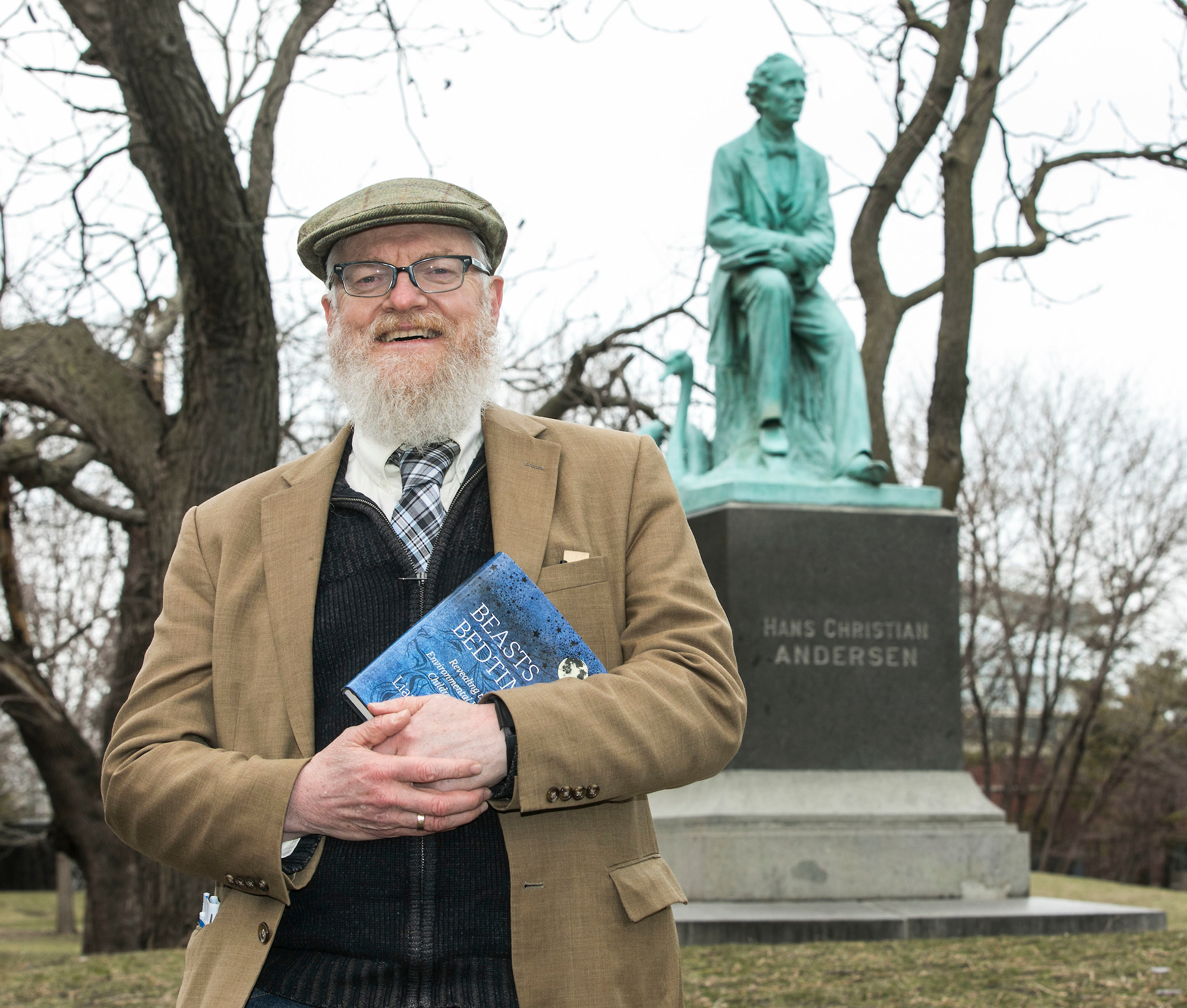CHICAGO — How can favorite children’s books, from “Peter
Rabbit” to “The Hunger Games,” teach valuable lessons about nature and the
environment? As a father and an environmental scientist, DePaul University
professor Liam Heneghan takes on this question in his new book, “Beasts at
Bedtime: Revealing Environmental Wisdom in Children’s Literature.”
Heneghan, who teaches in DePaul’s College of Science and
Health, used his own children’s library as inspiration and wrote the book with parents
and teachers in mind. In this Q&A, he discusses how parents and teachers
can use classics that are already on children’s bookshelves to build
environmental literacy.
Q: What did you learn
about popular children’s authors and how they oriented themselves to the
environment?
A: There’s so
much informal curriculum embedded in children’s literature, and it is not
accidental. It turns out a lot of these writers are explicitly environmental in
their thinking. J.R.R. Tolkien was motivated by concerns about the British
countryside as he created the legendarium, the work that forms the basis for
“The Lord of the Rings.” He would be considered authentically to be a
conservation-oriented writer.
Beatrix Potter was a fungi expert and had a paper on the
reproductive behavior of fungi that she wasn’t allowed to present to the Linnean
Society because she was a woman. She was frustrated that her efforts in the
natural sciences weren’t getting her anywhere. When she turned to writing the
“Peter Rabbit” books, she was taking her keen sensibilities as a scientist and
trying to craft these fictions around it.
Suzanne Collins, the author of “The Hunger Games,” is not
an accidental environmental writer. She learned a lot about the outdoors from
her father, who was a U.S. Air Force Veteran. We can read “The Hunger
Games” as a new take on classic wilderness survival story. Nineteen percent of
the novel is her finding water, and that doesn’t come out of a vacuum. It comes
from a writer who’s very attuned to what the character’s needs are.
 Liam Heneghan draws from his experience as a father and environmental scientist to uncover lessons about nature in classic and contemporary children's books. (DePaul University/Jamie Moncrief)
Liam Heneghan draws from his experience as a father and environmental scientist to uncover lessons about nature in classic and contemporary children's books. (DePaul University/Jamie Moncrief)Q: How do you define
environmental literacy?
A: The literature
is very mixed on this. For me, it’s any component of any discipline in front of
which you can stick the word environmental. Environmental literature,
philosophy, science, ethics. It’s a pretty broad sweep of disciplines. Each one
helps us understand how the world works, and how we should orient ourselves
toward the world and appreciate it, love it and do right by it and by
ourselves.
Q: Many parents are
worried about their children dealing with environmental challenges, like
climate change. How can reading boost kids’ competency in learning about these
issues?
A: Regardless of
the problem that you know your kids are going to be confronted with, kids have
to feel they have a stake in the beauty of the world. They have to love this
world and understand this world that they’re living in. They have to have a
genuine, authentic understanding of what it is to be human, which of course is
why we’re reading them stories in the first place. It’s not easy for every
parent to articulate it, but stories help us become human. And children’s
stories do that exceptionally well, while smuggling in this environmental
curriculum that adult books have dispensed with. In children’s books, representation
of animals and nature are everywhere. In the adult books, you get accidents and
war. All of us should be reading a steady diet of young adult literature.
Q: What inspired you
to write “Beasts at Bedtime”?
A: It happened
when both our kids were grown up and launched in the world, and I had this
experience of locking the doors at night. It’s a weird feeling, instead of
locking your kids safe in bed at night, you’re locking your kids out. It hit me
really hard, and we were also repurposing their bedrooms. I was transferring
their books down to the basement, and as I was going down this nostalgic road
remembering all the really fun conversations these books had inspired over the
years.
I set out to do a more didactic mapping of environmental
concepts in children’s books. But what I found was that there really is pretty
much every dimension of environmental literacy embedded in classic children’s
literature.
For more about “Beasts at Bedtime: Revealing Environmental
Wisdom in Children’s Literature,” visit http://bit.ly/BeastsAtBedtimeUC.
###
Source:
Liam Heneghan
lhenegha@depaul.edu
Media Contact:
Kristin Claes Mathews
kristin.mathews@depaul.edu
312-362-7735